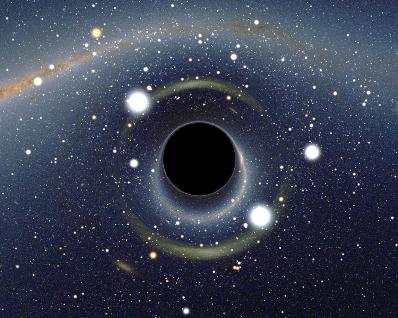
While I grew up with Star Trek, I don't quite consider myself a Trekkie. That is, I don't have models of Klingon Battle Cruisers dangling from the ceiling with fishing line (not since about 1974), I don't go to Trek conventions, and I don't prance around the house in a Federation uniform and pointy, latex, stick-on ears.
But the concept of "warp drive" continues to fascinate me - from a fiction perspective if nothing else. Without some form of faster-than-light drive in our future, the universe becomes a very small place. Aliens can't come here, we can't go to the aliens. This possibility wrecks a lot of potential for fiction writing.
Einstein figured out almost a century ago that no material object or packet of information can go faster than the speed of light. True, one can travel close to the speed of light and undergo time dilation, so that centuries could pass on Earth as an astronaut is zipping across the cosmos at 99% c (c being the speed of light, 186, 282 miles per second). One of my favorite authors, Larry Niven, had a lot of fun with this in his short stories, and in novels such as A World Out Of Time. But wouldn't it great if we could travel to a planet circling an inhabited star 200 light years away, hobnob with the extraterrestrials there, and be back in time to take the wife out for Mother's Day?
There are several proposed methods for traveling faster than light, but my favorite is this: although material objects cannot exceed c, space itself can travel faster than light. Physicist Alan Guth worked this into his Inflationary Universe Hypothesis, in which he showed that, at some point fractions of a second after the Big Bang, the universe - space itself - expanded at FTL speed.
Not long ago, a Mexican physicist named Michael Alcubierre proposed that a ship could travel faster than light by contracting the space in front of it, while expanding the space behind it. I picture a spacecraft like a surfboard, riding a wave of spacetime at FTL velocities. It's an elegant idea and image and, up until April 3rd, 2009, an entirely possible thing to accomplish, given arbitrary advances in energy generation and management.
However, a trio of Spanish physicists have published a paper showing that while it's hypothetically possible to move a patch of spacetime - with a ship embedded within that bubble - at FTL velocities, the bubble itself would quickly fill with intense Hawking radiation, killing the crew and likely vaporizing any material within.
A month later, Marc Millis, former head of NASA's Breakthrough Propulsion Physics Project, said such a thing is indeed possible. However, I can find no technical papers challenging the Hawking radiation problem.
So the debate goes on. I suspect we won't have firm answers to such questions for decades, or perhaps even longer. And, even assuming a "warp drive" is possible, I don't look for engineers to design a prototype anytime soon. But if you write science fiction or other imaginitive literature, this stories bears careful watching.
No comments:
Post a Comment